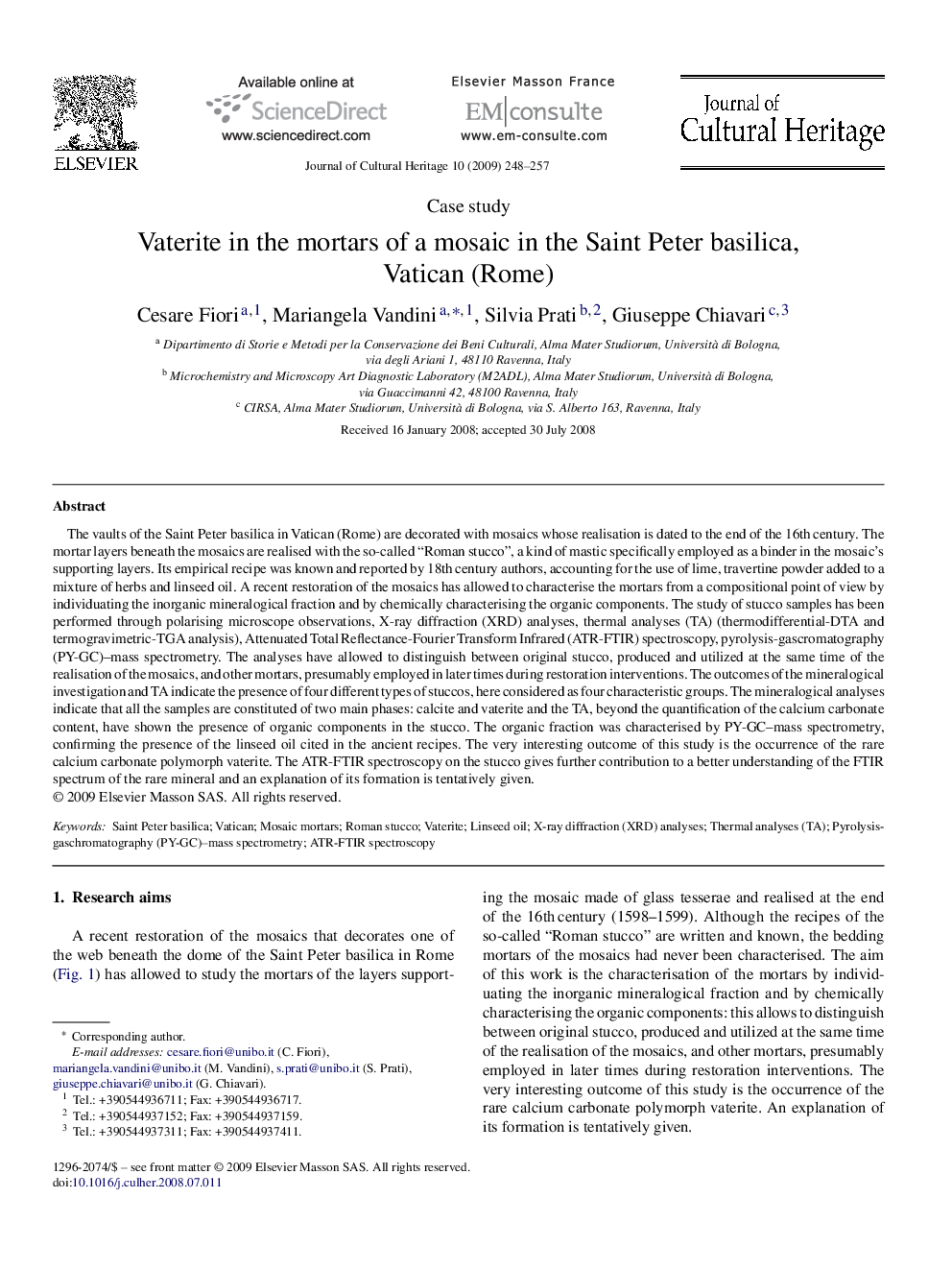| کد مقاله | کد نشریه | سال انتشار | مقاله انگلیسی | نسخه تمام متن |
|---|---|---|---|---|
| 1038641 | 944230 | 2009 | 10 صفحه PDF | دانلود رایگان |

The vaults of the Saint Peter basilica in Vatican (Rome) are decorated with mosaics whose realisation is dated to the end of the 16th century. The mortar layers beneath the mosaics are realised with the so-called “Roman stucco”, a kind of mastic specifically employed as a binder in the mosaic's supporting layers. Its empirical recipe was known and reported by 18th century authors, accounting for the use of lime, travertine powder added to a mixture of herbs and linseed oil. A recent restoration of the mosaics has allowed to characterise the mortars from a compositional point of view by individuating the inorganic mineralogical fraction and by chemically characterising the organic components. The study of stucco samples has been performed through polarising microscope observations, X-ray diffraction (XRD) analyses, thermal analyses (TA) (thermodifferential-DTA and termogravimetric-TGA analysis), Attenuated Total Reflectance-Fourier Transform Infrared (ATR-FTIR) spectroscopy, pyrolysis-gascromatography (PY-GC)–mass spectrometry. The analyses have allowed to distinguish between original stucco, produced and utilized at the same time of the realisation of the mosaics, and other mortars, presumably employed in later times during restoration interventions. The outcomes of the mineralogical investigation and TA indicate the presence of four different types of stuccos, here considered as four characteristic groups. The mineralogical analyses indicate that all the samples are constituted of two main phases: calcite and vaterite and the TA, beyond the quantification of the calcium carbonate content, have shown the presence of organic components in the stucco. The organic fraction was characterised by PY-GC–mass spectrometry, confirming the presence of the linseed oil cited in the ancient recipes. The very interesting outcome of this study is the occurrence of the rare calcium carbonate polymorph vaterite. The ATR-FTIR spectroscopy on the stucco gives further contribution to a better understanding of the FTIR spectrum of the rare mineral and an explanation of its formation is tentatively given.
Journal: Journal of Cultural Heritage - Volume 10, Issue 2, April–June 2009, Pages 248–257